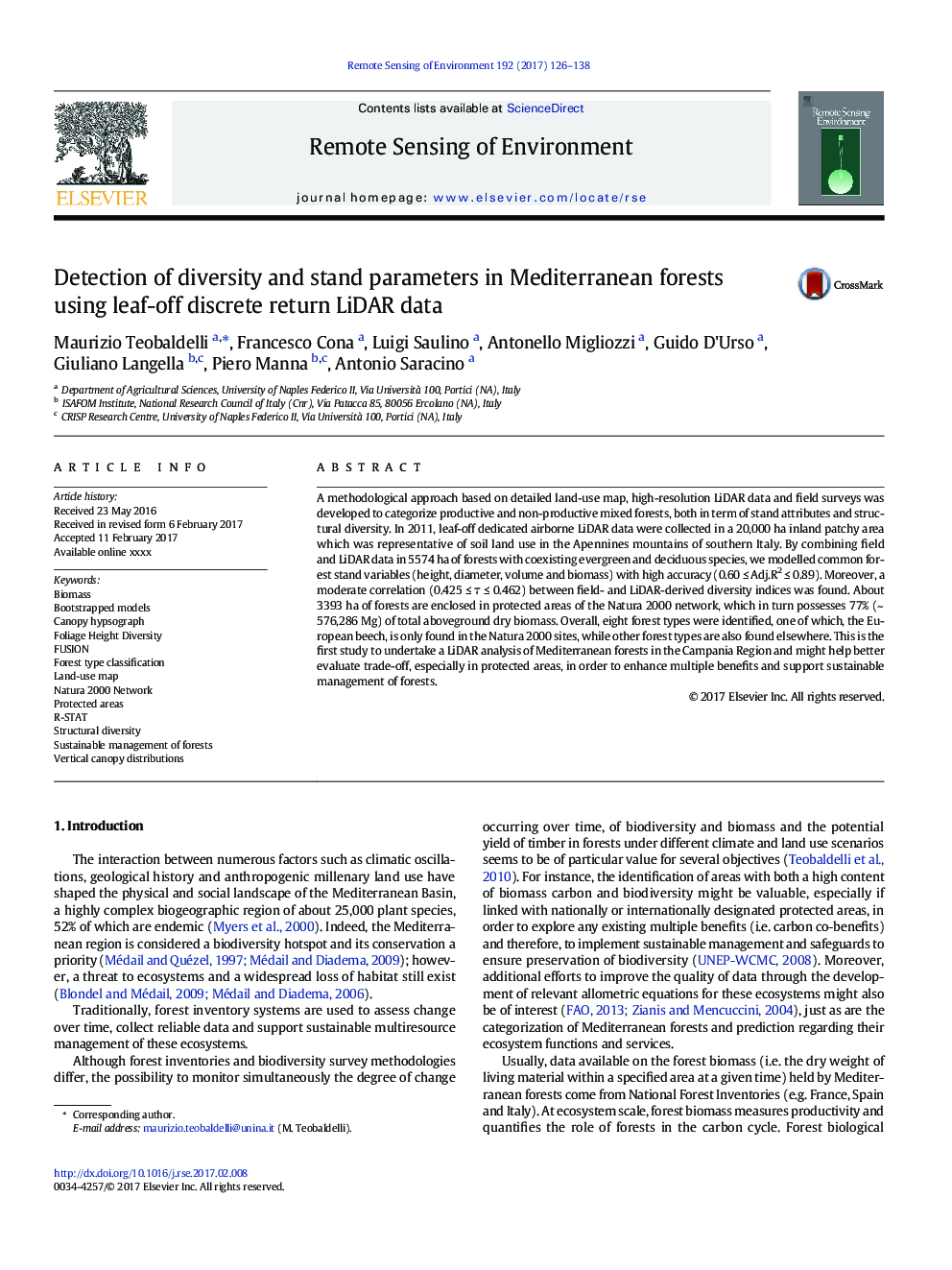| Article ID | Journal | Published Year | Pages | File Type |
|---|---|---|---|---|
| 5754875 | Remote Sensing of Environment | 2017 | 13 Pages |
Abstract
A methodological approach based on detailed land-use map, high-resolution LiDAR data and field surveys was developed to categorize productive and non-productive mixed forests, both in term of stand attributes and structural diversity. In 2011, leaf-off dedicated airborne LiDAR data were collected in a 20,000 ha inland patchy area which was representative of soil land use in the Apennines mountains of southern Italy. By combining field and LiDAR data in 5574 ha of forests with coexisting evergreen and deciduous species, we modelled common forest stand variables (height, diameter, volume and biomass) with high accuracy (0.60 â¤Â Adj.R2 â¤Â 0.89). Moreover, a moderate correlation (0.425 â¤Â Ï â¤Â 0.462) between field- and LiDAR-derived diversity indices was found. About 3393 ha of forests are enclosed in protected areas of the Natura 2000 network, which in turn possesses 77% (~ 576,286 Mg) of total aboveground dry biomass. Overall, eight forest types were identified, one of which, the European beech, is only found in the Natura 2000 sites, while other forest types are also found elsewhere. This is the first study to undertake a LiDAR analysis of Mediterranean forests in the Campania Region and might help better evaluate trade-off, especially in protected areas, in order to enhance multiple benefits and support sustainable management of forests.
Related Topics
Physical Sciences and Engineering
Earth and Planetary Sciences
Computers in Earth Sciences
Authors
Maurizio Teobaldelli, Francesco Cona, Luigi Saulino, Antonello Migliozzi, Guido D'Urso, Giuliano Langella, Piero Manna, Antonio Saracino,
